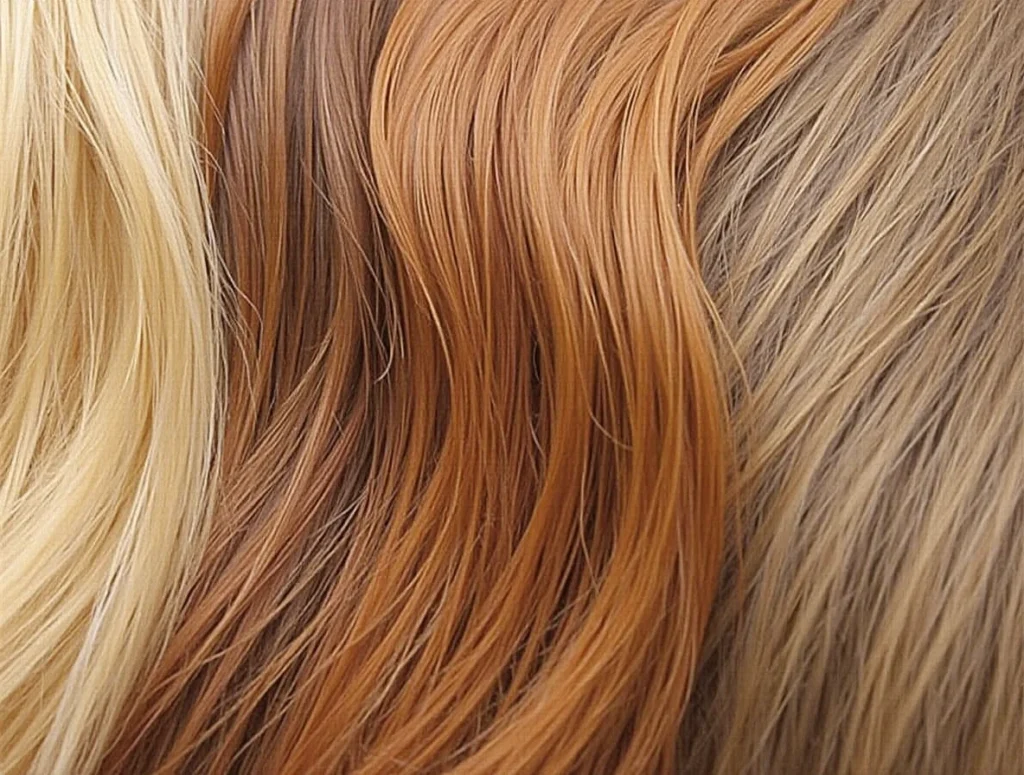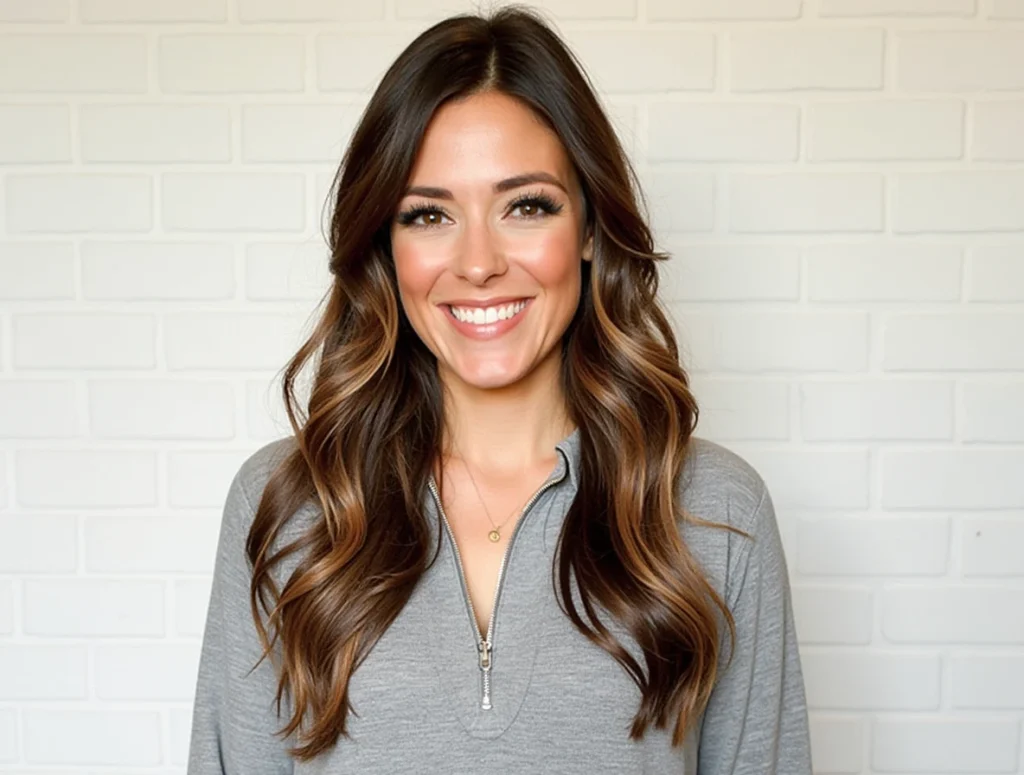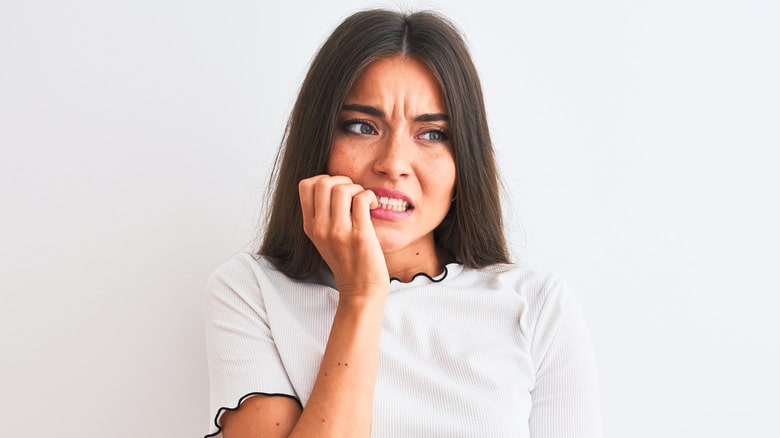Embracing natural hair colors can transform how you see yourself, enhancing your unique features and boosting your confidence. Finding the perfect natural hair shades to match your style and complexion may seem tricky, but it can make you look and feel your best.
Whether you want a small change or a big one, knowing your skin, eye color, and hair base is crucial. Choosing the right hair color can highlight your best features. This makes you feel more confident in your own skin.
In this article, we’ll talk about the science of natural hair colors. We’ll give tips on how to enhance your natural colors. We’ll also look at the latest trends and techniques for a natural look. Get ready to discover your natural beauty.
Understanding Your Natural Features
Enhancing your natural hair color starts with knowing your unique features. Your skin undertones, eye color, and natural hair base all play a part. Together, they create your beauty. By understanding these, you can choose hair colors that will look best on you.
Role of Skin Undertones
Skin undertones can be cool, warm, or neutral. To find out yours, look at the veins on your wrist. Blue or purple veins mean cool undertones. Greenish veins are warm, and a mix is neutral. Knowing your undertone helps pick hair colors that match your skin.
Importance of Eye Color
Your eye color is key in choosing hair colors. Brown eyes look great with warm tones like honey blonde or auburn. Blue eyes suit cool shades like platinum or ash blonde. Green eyes pop with warm browns and fiery reds.
Natural Hair Base Analysis
Looking at your natural hair color can help find the best enhancements. Your hair’s base color affects how dye will look and take. Knowing your natural base ensures a natural-looking color job.
The Science Behind Natural Hair Colors
Your hair color comes from the melanin pigments in your hair. Eumelanin makes hair darker, like brown and black. Pheomelanin makes it lighter, like red and blonde. These two types mix to create all the natural hair colors we see.
Genetics also shape your hair color. Changes in genes affect how melanin is made and spread. Knowing about hair pigmentation helps you pick the right dyes and styles for your look.
The amount of melanin in your hair affects its color. More melanin means darker hair that absorbs more light. Less melanin means lighter hair that reflects more light. This is why some people have naturally darker or lighter hair.
Enhancing Your Natural Hair Color
Looking to add depth and dimension to your hair color? There are several techniques you can try. You can work with your base color by adding subtle highlights or soft balayage. These methods create depth and movement without changing your natural color too much.
Subtle Enhancement Techniques
Babylights add a natural-looking radiance to your hair. They involve fine, blended highlights placed strategically. Soft balayage, a freehand highlighting method, introduces delicate, sun-kissed accents to your hair. These techniques keep your base color intact while giving you a refreshed, dimensional look.
Color Depositing Methods
Color depositing methods like temporary dyes or tinted conditioners can revive your hair color. They add shine and vibrancy without a long-term commitment. By staying close to your natural base, you get a seamless, harmonious result.
When enhancing your natural hair color, it’s important to work within your base. Talk to a professional colorist to find the best method for your hair type and desired look. With the right techniques, you can get a beautiful, natural color that complements your features and enhances your natural beauty.
Choosing Colors Based on Seasonal Analysis

Understanding your seasonal color analysis can change how you see hair colors. This theory groups people into four seasons – Spring, Summer, Autumn, and Winter – based on their natural coloring. By matching your hair color to your seasonal palette, you can highlight your best features and look natural.
Spring types look great in warm, light shades like golden blonde or soft auburn. Summer folks shine with cool, muted tones like ash brown or platinum. Autumn beauties rock rich, warm colors like chestnut or copper. Winter’s cool, deep hues like ebony or ink blue are stunning.
Looking closer at seasonal color analysis, some people might fit into “soft” or “clear” categories. These can help narrow down the best hair color for you. By thinking about your skin’s undertones, eye color, and natural hair base, you can pick the most flattering shades for your seasonal color analysis.
Embracing your seasonal color palette can boost your look and let you be yourself. With some help from color theory, you can find the hair color that makes you feel confident and radiant.
Natural Hair Colors and Their Variations

The natural hair color spectrum is full of shades, from the lightest blonde to the richest auburn and brunette. Exploring this range can highlight your unique features. It helps find the perfect color for your skin tone and style.
Blonde Spectrum
The blonde spectrum includes many shades, from palest platinum to deep, honey-hued dark blondes. Whether you’re natural natural blonde shades or want to lighten your hair, this color family suits many skin tones.
Brunette Range
Brunette hair colors range from light chestnut to rich, brunette variations chocolate tones. These warm, earthy hues are classic and timeless. They can be customized to highlight your unique features.
Auburn and Red Tones
For a fiery touch, the auburn hair colors spectrum offers stunning coppery, auburn, and red shades. From strawberry blonde to mahogany, these hues add vibrant personality to your look.
Professional vs. DIY Natural Color Enhancement
There are two main ways to enhance your natural hair color: professional salon treatments or DIY at-home hair dye. Each has its benefits and things to think about. Salon services can cost from $50 to $300 or more. At-home kits, however, are cheaper, costing between $5 and $20.
Professional colorists have lots of training in color theory and hair types. They use top-notch products that work better, last longer and are gentler on hair. But, salon visits can take hours and might have long wait times.
DIY hair coloring is getting more popular because it saves money. Brands focus on saving money and giving you control. But, coloring your hair at home can lead to mistakes like uneven color or wrong shade. Misunderstandings with the colorist can also cause bad results.
When deciding between salon services and DIY, think about what you want, how much work you’re willing to do, and your budget. Salons offer expert advice and custom solutions. DIY is cheaper and easier. Your choice depends on what you value more.
Maintaining Natural-Looking Hair Color
To keep your hair color vibrant and healthy, start with the right shampoo and conditioner. Look for color-safe options that clean gently and nourish your hair. These products help your hair color last longer, keeping it bright and natural.
Protection Techniques
Protecting your hair from the outside is key. Wear a hat or use a UV-protecting hair spray to shield it from the sun. Try to use heat styling tools less, as they can dry out and fade your hair color.
Touch-up Strategies
Regular touch-ups are important to keep your color looking fresh. Use color-depositing treatments or root touch-up kits to blend new growth. Deep conditioning treatments also help keep your hair’s color and texture in top shape.
By following these care tips, you can keep your hair color looking natural and vibrant. The right products and protection can help you enjoy your hair with confidence for longer.
Common Mistakes to Avoid When Coloring
Coloring your hair can change your look, but it’s key to avoid common mistakes. Choosing the right shade for your skin is crucial. The wrong color can make your hair look unnatural.
Another mistake is over-processing your hair. Natural hair color should sit on your hair for 30 to 45 minutes. Longer times can damage your hair and lead to color problems later.
It’s also important to wait 48 hours before washing your hair after coloring. This lets the color set properly.
Not taking care of your hair is another mistake. Use products like the PHOTO COLOR range to protect and moisturize your hair. Keeping up with regular dyeing, especially after bleaching, is also important. It’s hard to get back to your natural color once it’s been lightened.
For color correction, get professional help. Trying to change your hair color too much can lead to mistakes. Colors on the color wheel can help fix issues, but be careful not to damage your hair further.
Natural Hair Color Trends
Stay current with the latest hair color trends to enhance your natural beauty. From pastel shades to silver-grey hues, the world of hair color is always changing. Celebrities often set the trend, showing us how to naturally enhance our hair colors.
Current Style Movements
Now, dimensional brunettes are all the rage, with warm and cool tones adding depth. “Lived-in color” and “shadow roots” are popular for a natural look without much effort. Pastel colors like soft pinks and lavenders are also trending, adding a playful touch to your hair.
Celebrity Inspirations
Celebrities are our go-to for hair color inspiration. Gigi Hadid’s blonde and Zendaya’s auburn are just a few examples. They show how to highlight your natural hair while adding subtle touches.
When exploring new hair colors, pick shades that match your natural features and skin tone. The right color can make you look effortlessly chic and natural.
Low-Maintenance Color Techniques

Looking for a simple hair color solution? Try balayage, ombre, or root smudging. These methods give you a natural look that grows out smoothly. Ombré, for example, means you can go months without needing a salon visit. Balayage gives you a highlighted look with a soft line as your hair grows.
For a light change, think about semi-permanent or demi-permanent dyes. They last from 12 to 24 washes, letting you try new colors without a big commitment. Glazes and hair glosses also offer a quick color boost, lasting from two weeks to six months.
Lowlights and highlights are also easy to maintain. Lowlights add depth and blend well as your roots grow. Highlights can last up to five months if done right. You can also try vibrant hair chalk for a quick change.
Choose a low-maintenance hair color method that works for you. Use color-safe products and touch-up tips to keep your look fresh. With the right approach, you can have beautiful, easy-to-care-for hair color.
Embracing Your Natural Hair Color
Benefits of Natural Shades
Choosing your natural hair color can make you look more authentic and cut down on hair care. It matches your skin and eye color perfectly, giving you a natural look. Plus, it means healthier, shinier hair and less damage from dyes.
Building Confidence: natural hair colors
Feeling good about your natural hair color can boost your self-esteem. About 80% of people who stick with their natural color feel more confident. It makes you feel more at ease and lets you show off your style.
Think about adding a bit of color that highlights your natural beauty. Natural colors are great for trying out new looks without harming your hair. This way, you can stay true to yourself and feel more confident in your own skin.
Discover more nail trends:
- 10 Stunning Auburn Hair Color Ideas for Your Next Look
- How to Get Perfect Strawberry Blonde Hair at Home
- 15 Hairstyles That Take 10 Years Off Your Age
- 10 Trendy Hair Color Ideas for a Stylish Transformation
- Jennifer Lopez Faces Backlash Over Red Carpet Interaction: How Celebrities Can Manage Public Perception
- Follow us on Facebook
- Follow us on Pinterest





